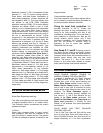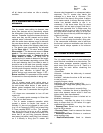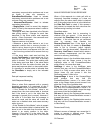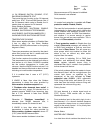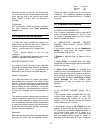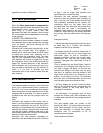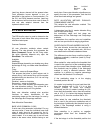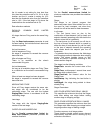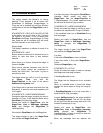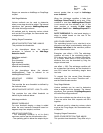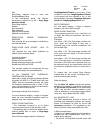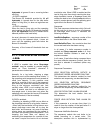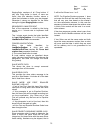
Date: 8-4-2010
Revision: 0
Form: 2396
4.7.10 BURNER DEMAND
The stager checks the Master’s LL burner
demand. If this demand is off all slaves with
SlaveStates of AddStage, SuspendStage, or
Firing are set to Available by the Rate Allocator
turning them all off and the StagerState is set to
be Idle.
STAGERSTATE = IDLE WITH SLAVES ACTIVE
If the stager runs and its state is Idle, it checks
the status of all slaves. If any of these have
SlaveState=AddStage, SuspendStage, or Firing
then these are set to Available (this will cause
the Rate Allocator to turn them all off).
Stager States
The stager's operation is defined for each of its
states:
STAGERSTATE = IDLE
Burner demand means that a demand source is
calling for heat and there is also setpoint
demand.
When there is no burner demand the stager is
forced to be Idle.
When burner demand becomes true (Call for
Heat) the stager checks the sequencer to
identify the lead boiler. That boiler is given a
command to start.
The stager resets (to verify it is at 0) and starts
its Stager- Timer, and sets the
StagerTimeLimit to the value of the slave's
Demand-to-firing delay time.
If the Stager fails to get even one boiler from the
Sequencer, it issues an alert and suspends until
it runs again.
STAGERSTATE = ADDSTAGERESPONSE
During this state the stager is waiting for slave to
transition to Firing. If the identified boiler has a
SlaveState=Firing then the stager:
Resets and starts it’s StagerTimer, sets the
StagerTime- Limit to Add-stage interstage
delay, and changes the StagerState to
InterstageDelay.
If the boiler's SlaveState is still AddStage then:
The stager checks to see if the StagerTimer
has reached the StagerTimeLimit.
If so then the stager: Changes the SlaveState to
Suspend- Stage, resets and starts its
StagerTimer, sets the StagerTimeLimit to
T_StagerSuspend. This allows additional time
for the slave to reach its firing condition.
STAGERSTATE = ADDSTAGESUSPEND
During this state the stager is waiting to see if
the slave has transitioned to Firing or Available.
If the identified boiler has a SlaveState=Firing
then the stager:
Resets and starts its StagerTimer, sets the
StagerTime- Limit to Add-stage interstage
delay, it changes the StagerState to
InterstageDelay.
The stager checks to see if the StagerTimer
has reached the StagerTimeLimit.
If so then:
If the boiler's SlaveState
is set to Available.
If any slave boiler is firing then StagerState =
Active
Otherwise StagerState = Idle
STAGERSTATE = ACTIVE
During this state the stager is ready to manage
add-stage and drop-stage requests.
If AddStageRequest is true
The Stager ask the Sequencer for an available
slave.
When an available slave is found the stager
repeats the above steps to bring this stage to
Active.
If DropStageRequest is true and more than 1
slave burner is firing, the stager:
Invokes SetRecovering for the stage identified
by DropStageRequest. This will turn the stage
off and put it into the recovering state until it has
finished its postpurge (if any).
Resets and starts its StagerTimer, sets
StagerTime- Limit to Drop-stage interstage
delay, changes the StagerState to
InterstageDelay, invokes an action to reset the
Add/Drop detection timers.
When the Interstage time has elapsed, the
70



